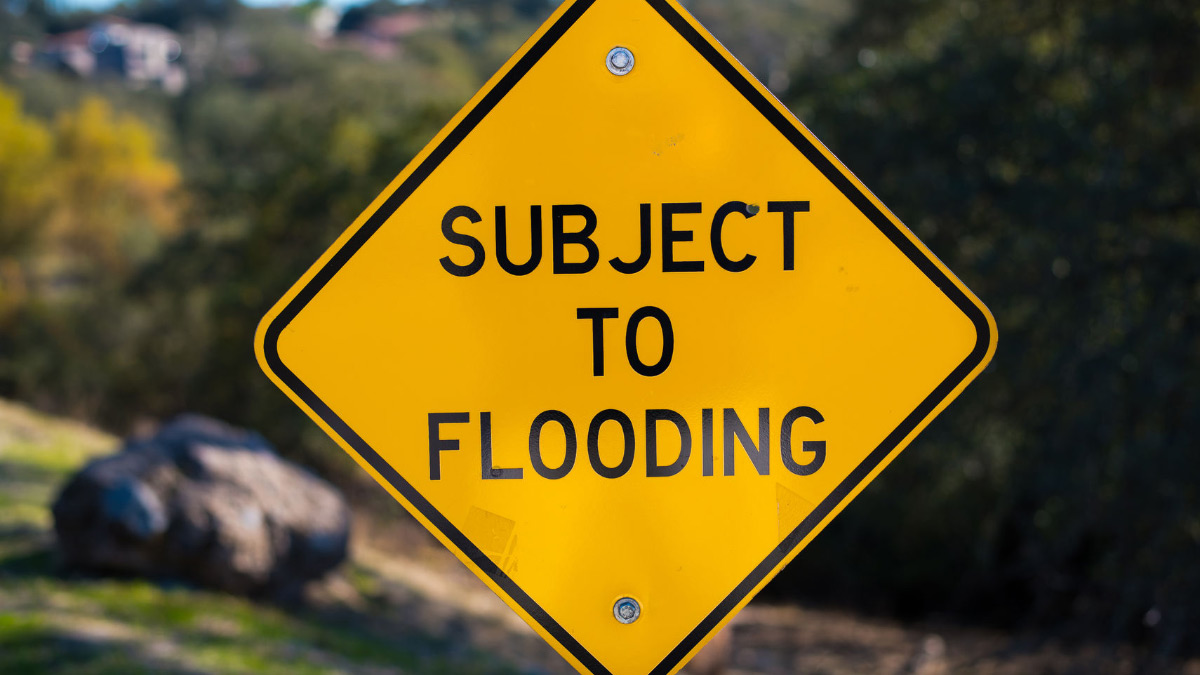It has been more than a week since Hurricane Florence made landfall in North Carolina, and flood waters are continuing to wreak havoc across the Carolinas and Virginia. While much of the destruction caused by the powerful storm was unavoidable, some of it was, and government interventions have only served to exacerbate such tragedies.
The hurricane is responsible for at least 42 deaths. Tens of thousands are still without power and flood waters that could take weeks to recede. New evacuation orders are still being made in South Carolina due to flooding. Early estimates put property damage at around $20 billion, perhaps higher, and probably billions more in agricultural damage to crops and livestock.
While most storms are thankfully nowhere near as harmful as Florence, hurricanes hitting the Atlantic and Gulf coasts is somewhat of a regular occurrence (hence, the reason we have a “hurricane season”). So why do people continue to build so many homes and businesses in the path of danger? The answer is, in no small part, because of government meddling in home insurance markets.
For 50 years the National Flood Insurance Program, administered by the Federal Emergency Management Agency, has encouraged the building—and rebuilding—of homes in coastal and other flood zones. About one in every five of the NFIP’s more than five million policies originated before FEMA introduced its Flood Insurance Rate Maps in the mid-1970s, and are grandfathered in at below-market rates, sometimes as little as one-third of the full risk-based cost (see here and here).
Unlike many private insurers, the NFIP does not place a limit on how many times a property may be rebuilt, leading to repeated rebuilding in the most dangerous areas. These “severe repetitive loss properties” comprise less than 1 percent of NFIP policies but are responsible for approximately 30 percent of the claims costs. Like the home outside of Baton Rouge, La., assessed at nearly $56,000, which has flooded 40 times, racking up $428, 379 in claims. Or the $42,000 house outside of Houston that has been repaired 19 times at a total cost of $912,732.
“The potential losses generated by NFIP have created substantial financial exposure for the federal government and U.S. taxpayers,” the U.S. Government Accountability Office concluded in a February 2013 report to Congress. “While Congress and FEMA intended that NFIP be funded with premiums collected from policyholders and not with tax dollars, the program was, by design, not actuarially sound.”
In 2012, in an attempt to provide some financial stability to the ailing NFIP, which was $20 billion in debt at the time, Congress required FEMA to phase out many of the subsidized policies in order to more accurately reflect cost and risk. Existing policyholders naturally balked at paying the higher premiums, however, and the backlash was strong enough that politicians quickly caved and rescinded the requirements, restoring the grandfathering of subsidized policies and capping premium increases.
Things have only gotten worse since then. Last year, Congress and President Donald Trump approved a $16 billion taxpayer bailout by canceling NFIP debt. Despite this, the program remains $20.5 billion in the red.
But such interventions—and the moral hazards they create—are hardly confined to the federal government. Some states have similar programs, like the Texas Windstorm Insurance Association, established in 1971. Hawaii even set up an organization to offer insurance to those who live in lava flow zones, thereby encouraging people to live in the shadow of one of the most active volcanoes on the planet, as we saw once again this summer.
When a lava flow from the volcano Kilauea buried the town of Kalapana in 1990, the losses prompted many insurers to stop covering homes in the riskiest areas.
“The market had efficiently determined that there was too much risk in living close to Kilauea,” wrote Keli’i Akina, president and CEO of the libertarian Grassroot Institute of Hawaii, in a Wall Street Journal column in May. “Had that thinking prevailed, the current eruption might have done far less damage.”
But those in government felt compelled to “do something.” So they established the Hawaii Property Insurance Association as a nonprofit insurer of last resort. Crucially, the law required all insurers in the state to join.
Fast forward to this year, when Kilauea erupted again for several months beginning in May, claiming more than 700 homes in the process. One cannot help but wonder how much less the human and property toll would have been if insurers had not essentially been forced to insure overly risky properties.
When private parties determine that it is not worth risking their own money to underwrite homes in disaster areas, we should listen to the wisdom of the market, not compound the problem by investing the public’s money in such doomed ventures.
But even the substantial costs to taxpayers—and insurance policyholders who effectively subsidize those living in risky areas by paying higher premiums than they otherwise would, in order to cover insurers’ disaster losses—cannot capture the entirety of the failings and dangers of these well-intentioned programs.
“The state Legislature’s failure isn’t only economic—it’s moral,” the Grassroot Institute’s Akina asserted. “Hawaii’s lawmakers put citizens in danger by giving them an incentive to live in an area that the market had deemed too risky to ensure.” So, too, does the federal government through the NFIP.Supporters of these government-established insurance programs may think they are helping people by offering subsidized insurance, but it does not do them any favors to repeatedly encourage them to live in harm’s way.
But don’t look to Congress for significant changes, much less the abolition/privatization of such programs. For the seventh time in the past year, it passed a short-term reauthorization of the National Flood Insurance Program on July 31—once again, without any reforms.









